Android Phone Fans |
- IDC: Android phones accounted for 3 out of 4 of all smartphones sold last quarter
- iMpulse controller gets limited white edition
- Huawei Ascend D Quad XL Review
- Nexus 7 fares well against latest iPads in SquareTrade’s “Drop and Dunk” Test
- Sprint ZTE Flash launching Nov 11th for $130 with 12MP camera, S4 processor, 720p display [LEAK]
- HTC DROID DNA render leaked
- Samsung Galaxy Note 2 sells 3 million units in 30 days; Galaxy S3 at 30 million
- Mophie’s first non-iOS smartphone case is available for the Samsung Galaxy S3
- Jelly Bean distribution checks in at 2.7%, Gingerbread still sits on more than half of all Android devices
- LG Optimus G, Sony Xperia TL now available from AT&T
- Google’s Music Explorer now live in the Play Store for some users
| IDC: Android phones accounted for 3 out of 4 of all smartphones sold last quarter Posted: 02 Nov 2012 02:25 PM PDT Just when you thought the good news for Google had all subsided, another major piece of good news comes in for the “don’t be evil” company. The IDC, one of the world’s most respected and credible analytics firms, is reporting that Android was the king of the third quarter with 75% of all smartphones being sold running the OS. Think about that — for every 1 smartphone sold last quarter without Android there were 3 more that runs Google’s particular offering. That’s huge news for the Mountain View giant who undoubtedly wants Google Search in the hands of pretty much anyone that cares to have a smart phone.
The only other operating system to take double digit percentage was Apple with 14.9% of the share. And beyond the bitten fruit company? The next closest operating system was RIM’s Blackberry, and that only accounted for 4.3%. Windows Phone is continuing to struggle as it couldn’t even pass the antiquated Symbian, though Microsoft is banking on strong Windows Phone 8 buzz to keep its smartphone hopes afloat. Also, to its credit, Windows Phone was only one of three operating systems that grew (Apple, Google) albeit at a very insignificant rate. One has to wonder where the tipping point will be for Google. Other competition threatens the “open and free” landscape Google has dominated for four years running, but most of those projects are either on their last breath or have barely taken their first. iOS has remained relatively stagnant all things considered, though sales of the iPhone 5 will give Apple a much needed injection in the fourth quarter of this year. Beyond that, Google pretty much has a mean sleeper hold on the smartphone market that even Chuck Norris would be proud of, and it doesn’t look to be letting up anytime soon. [via IDC] |
| iMpulse controller gets limited white edition Posted: 02 Nov 2012 01:55 PM PDT The Kickstarter campaign for the iMpulse wireless gaming controller is about to come to an end (34 hours as of the time of this writing) and a new pledge tier has opened up for those of you who haven’t yet gone “in for one.” The company has announced a limited run of an “iMpulse white” and the only way for you to get in on this is to pledge to buy one through Kickstarter. Since this will be a limited run the cost is a little bit higher than the regular iMpulse controllers — you’ll have to pledge $37 if you want one of these to go on your keychain. Those who have already pledged can add the white edition for just $30 each. You’ll have to use the “Manage Your Pledge” button to manually figure that into your current pledge, and be sure to note that you’re putting in an order for a white edition once you receive the iMpulse survey coming next week. I must say that this controller looks great in white and if I were a backer I probably wouldn’t want to pass it up. Be sure to do what you need to secure one before the deadline ends in a day and a half, though, because once it’s over you won’t have any other chance to get one in this color. There have been some other updates of note over the past month, such as news about new accessories and functionality. The iMpulSleeve will be available for those who want to store their controller for safe-keeping. When the controller is separated from the sleeve it acts as a stand for your phone so you can prop your phone up properly and game with comfort. The project has also reached a stretch goal that will now be giving us two new shoulder buttons, something that is increasingly important for many games and will probably make for a more natural media-controlling experience. Find out more about all of these great updates over at the project’s Kickstarter page. |
| Huawei Ascend D Quad XL Review Posted: 02 Nov 2012 12:49 PM PDT
It might feel like beating a dead horse at this point, but Huawei is not the device manufacturer we knew them to be only a year or two ago. Over are the days of cheaply assembled devices with just enough power to scrape by — those handsets have been replaced by hardware featuring quad-core processors and HD displays. The Huawei Ascend D Quad XL is one of those devices, and yet another sign that there is no turning back for the Chinese company that has taken some heat from the US government lately. The D Quad dazzles, but has Huawei created their top Android device yet? Read on to find out. HardwareThe Ascend D Quad XL features specs to match nearly any of the recent crop of top Android phones. The handset features a 720p HD IPS+ display measuring in at 4.5-inches (equating to a Retina Display challenging 326 pixels-per-inch), a 1.5GHz quad-core processor developed in-house by Huawei, and 1GB RAM. It also comes with an 8MP rear camera and 1.3MP front-facing camera, MHL connectivity and DLNA support, and a whopping 2,600mAh battery. The two hallmark specs are obviously the HD display and K3V2 processor, both of which excel within the D Quad XL. The screen is crisp and clear and beautiful enough to put some pressure on other handsets featuring similar displays (HTC One X, Samsung Galaxy S3). Depending on preference, the slightly smaller size compared to such handsets might be a deciding factor. Coming from using a Galaxy Nexus as my primary device it was surprising how much I noticed the difference of only 0.15 inches of screen real estate.
The quad-core chip in the Ascend D Quad is pretty stellar, especially considering Huawei’s announcement of the new chipset last February came out of nowhere. No one expected Huawei to release their own chipset, let alone one that excels at the level the K3V2 does. Compared to other devices boasting similar power in this department, users likely won’t notice much of a difference in performance. In terms of design, the D Quad XL isn’t the thinnest device in the world. Coming in at 10.9mm thick, the phone has a reasonable heft to it, but the size is necessary to handle the large battery. They didn’t call it the XL for nothing, though implying that the device is in some way “extra large” (as its name does) would be erroneous. It still feels nice in hand and the use of quality materials and a textured back cover provide a nice touch. SoftwareAs was the case with the Ascend P1 (which we reviewed over the summer), Huawei is providing users with an experience most other Android manufacturers simply do not. Instead of having to make a choice between stock Android or a custom skin before buying a device, Huawei has made it possible to easily switch between their “3D Home” and “2D Home.”
3D Home provides a completely customized version of Android, one that really didn’t do much for me. Huawei’s user interface features its fair share of customizations, including an animated rotating carousel of homescreens. Switch to the slyly named 2D Home and you are greeted with more or less a stock implementation of Android. Some of Huawei’s custom widgets and tweaks carry over, but at a glance you wouldn’t be able to tell the software apart from that of any other stock Android 4.0.4 device.
For this reason we have to give Huawei kudos in this department. Also for the way the handset’s hardware deftly handles this implementation of Android. Camera
The Huawei D Quad XL’s 8MP camera is powered by the same software found in the aforementioned Ascend P1 and the recently reviewed MediaPad 10 FHD. Users get a decent selection of effects and options for altering photos and creating a bit of artistic flourish, bust as is the case with these other Huawei devices the results are far from spectacular. Pictures don’t look terrible, and you can pull off some decent shots with good lighting and a bit of tweaking of the camera settings, but the biggest drawback was the inability to consistently capture quality images. This seems to be the case with most Android smartphones, and we’re still waiting for the day that a manufacturer is able to reproduce the photo experience iPhone users have had for years, as much as it pains me to say that. Video falls victim to similar shortcomings, as can be seen in the sample below. Again, with time and patience a quality result is possible, especially with the camera set to full 1080p video mode, but ultimately the D Quad XL doesn’t transcend its position as a phone with a camera. It will be sufficient when you want to capture a spur-of-the-moment video or snap off a few quick pictures to share with your social networks, but it’s no camera replacement. ConclusionLet’s go back to the refrain: there is no turning back for Huawei. While it might be a stretch to imagine the Chinese company gaining much ground on Samsung and other manufacturers outside of their home country, the Ascend D Quad XL deserves to be considered among oft-referenced devices such as the Galaxy S3. It’s easy to snicker at the not-so-fortuitous name, which for English speakers has become the butt of many a joke, but there is nothing funny about what Huawei has created here. It has power, class, and a flexible operating system, and that’s just about all we could ever hope for out of a top-tier Android smartphone.
|
| Nexus 7 fares well against latest iPads in SquareTrade’s “Drop and Dunk” Test Posted: 02 Nov 2012 12:47 PM PDT Drop tests have become a bit of a cultural necessity in the mobile tech kingdom, and another interesting test has been uploaded to YouTube for all to enjoy. This one comes from SquareTrade, the biggest provider of third-party warranties in the land. They obviously have some interest in tests like these considering they’ll be the ones replacing broken tablets for many of you, and what they’ve done here is interesting. SquareTrade pitted the Nexus 7 up against the iPad Mini and the iPad 3 in what it calls a “drop and dunk” test. The drop test is actually performed using its “drop bot,” a machine that drops each device at the exact same angles and velocities. It’s pretty neat, actually, considering many people struggle to get devices to drop exactly the same in conventional drop tests. In that portion of the trials the Nexus 7 seemed to have a considerable advantage over the two iPad devices. The first drop only saw a corner of the slab crack, though it couldn’t best the iPad Mini which only suffered some nicks on the edges. The iPad 3 was completely out of it. The second drop — a face-down planche, if you will — proved devastating for both iPad devices, and while the Nexus 7 wasn’t completely in the clear its cracks were only minimal and didn’t do much to hamper the experience. Finally, the “dunk” test had all 3 tablets submerged in water for the same amount of time to see how they stood up against water damage. None of the tablets seemed to malfunction, though SquareTrade erroneously suggest the Nexus 7 was unresponsive. Had they waited until it fully rebooted we would have a more accurate account of what ended up happening, but since it was turning on we assume things were OK. We would never perform these tests on our own devices, of course, so you won’t be getting any results from us in regards to that. Just make sure that huge 7 inch slate is in your bag and not your back pocket before you start doing cannonballs all over the place. Take a look at the drop test video above. |
| Sprint ZTE Flash launching Nov 11th for $130 with 12MP camera, S4 processor, 720p display [LEAK] Posted: 02 Nov 2012 12:44 PM PDT Leaked back in July, the Sprint ZTE Flash — carrying a 12MP camera, S4 processor, and 720p IPS display — was originally rumored for an October 14th launch date. Here were are in November with neither hide nor hair of the device, but it seems the launch has only slipped a little ways down the calendar, now slated for a November 11th release. This newest leak comes from our very own tipster who was able to secure a few leaked screenshot of the device, along with low $130 pricing and newly expected launch date. Another point of interest is the fact that the Sprint Flash could be offering a stock Ice Cream Sandwich experience if the above screenshot is any indication, possibly with Sprint ID. But, even with a fairly nice spec sheet and reasonable price tag, the ZTE Flash definitely has its work cut out for it. Also launching on November 11th is the LG Optimus G ($200) and its qwerty cousin, the LG Mach ($100). Sprint customers definitely have some good options this holiday season. Thanks, _epic! |
| Posted: 02 Nov 2012 11:52 AM PDT
Well, another piece of evidence suggests that Verizon will soon begin to market the DROID DNA. Evleaks has posted a leak of what looks to be the DROID DNA, and considering the context of the image (the device sits within some futuristic setting) it looks like this might be a snippet from one of those elaborate banner ads or a DROID DOES landing page. Regardless, it looks like Verizon and HTC are gearing up to drop this 5 inch bomb that looks to cause more than just a few ripples this holiday season. It’ll be interesting to see what they do in terms of timing with the Galaxy Note 2 launching at the end of this month. It was said that that particular device was scheduled so late into the month in order to make room for major marketing for the DROID RAZR HD devices, though that is something we likely won’t get confirmation on. Indications originally pointed to a November release for the DROID DNA, though @evleaks is saying to expect this one early December. It should be an interesting six weeks for Big Red should things go according to rumored plans. Is anyone waiting to see what HTC and Verizon have up their sleeves with this release or will you go a different route for your holiday smartphone purchase? [via @evleaks] |
| Samsung Galaxy Note 2 sells 3 million units in 30 days; Galaxy S3 at 30 million Posted: 02 Nov 2012 08:52 AM PDT The Samsung Galaxy S3 took the world by storm when it released this past summer. Sales are still going strong, and Samsung has found its bread and butter in the mobile world. Many didn’t know if that same success would eventually roll over into the Samsung Galaxy Note 2 series. Still relatively young, Samsung started perfecting this phablet phase back in 2011, and while the Samsung Galaxy Note was no failure, it certainly hadn’t reached the same success the Galaxy S line did. The line is starting to blur, however, as it appears the Samsung Galaxy Note 2 is quickly becoming a hit. In the short 20 days since it’s been available the Samsung Galaxy Note 2 has apparently sold 3 million units. Sure, Apple might be able to sell that many iPhones in just a week or probably even a day, but considering how large this device is up against more slender and small options those seem like some very good numbers. And consider this: most of North America haven’t even gotten a chance to buy the phone yet. Verizon and AT&T customers won’t have a chance to buy it until later this month, while those in Canada are only just now beginning to get their hands on it. Add in all the smaller countries in Europe, Asia and South America that might not yet have it and we’d say the Note 2 is doing pretty damn good for itself already. Meanwhile, Samsung’s Galaxy S3 has already eclipsed 30 million units sold to date, and with the holiday season looming it looks like they might be in line for another surge in sales after those who missed the summer rush finally get a chance to buy one. Samsung maintains four out of its best five weeks came after the launch of the iPhone, a figure that might indicate brand loyalty for Apple is finally starting to wane a little bit (though there’s really no telling what, exactly, it comes down to). Whichever way you put it, Samsung has found no issue getting through the iPhone launch and this further shows why it now has a vast majority of the world’s major carriers in the palms of its hands (yep, even in the cellular mess that we enjoy here in America). [via Samsung Tomorrow] |
| Mophie’s first non-iOS smartphone case is available for the Samsung Galaxy S3 Posted: 02 Nov 2012 08:08 AM PDT I’m sure many of you folks have heard of Mophie. The company creates mobile battery-charging units, and it got its claim to fame by making “juice pack” cases for iOS devices. These cases provide protection and extra battery life at the same time, so it’s like having an extended battery or swapping out a spare. While this problem was obviously more geared toward the non-user-replaceable Apple devices, many people wanted these cases for other phones. Well, Mophie has finally extended its collection to include the first Mophie juice pack case that isn’t an iOS device. As you might have guessed (that’s if you didn’t read the title first) it’s for the Samsung Galaxy S3, and this makes total sense for the company. For starters, the Samsung Galaxy S3 is pretty much identical on all carriers in all regions. Some units might be just a tad thicker, but the difference is so marginal that it doesn’t matter. This gives Mophie just one form factor to target, and since the Samsung Galaxy S3 is a wildly popular phone it’s the perfect device to break out of the iOS wheel they’ve been stuck with. The Galaxy S3′s Mophie juice pack delivers an extra 2,300 mAh of juice, which is actually 200 mAh more than the capacity of the battery the Galaxy S3 ships with. This effectively gives you double the battery life, and while your phone will get a tad bigger you’ll no doubt appreciate what it adds. Of course, there are a couple of different ways to use this case. Some people keep their devices inside the pack all day, even if they start the day at 100%. Others will only attach the pack when their devices are about to die, and this is probably the most practical way to use it. But no matter how you prefer to go about your business the commonality of it is that you’re getting a great mobile charging solution that isn’t as cumbersome as the usual bricks we see. It’ll cost you $100 for the privilege of owning one, and you can go ahead and take the plunge over at their website today. The cases are available in either white or black. Read on for full press details.
|
| Posted: 02 Nov 2012 07:37 AM PDT While Google’s tendency to keep the world updated on Android platform distribution numbers is more for the benefit of developers (after all, they have to know who to target), the tech world grasps onto these numbers with a tight death grip out of sheer interest. Welp, the latest report is up and things aren’t looking too out of the ordinary here. For starters, newcomer Jelly Bean has managed to break a little ground with 2.7% of the share so far. Samsung’s Galaxy Note 2 has a huge part in this as it was the first device to come shipped with Jelly Bean and that phone has sold 3 million units so far. But there are also the Nexus devices which are sure to make up a good chunk of that. Whichever way you slice the pie, though, the share is still quite small compared to previous versions, natch. For instance, Ice Cream Sandwich now exists on 25.8% of all devices. It hasn’t quite been able to break the same ground Gingerbread did on the phone side of things, unfortunately, and with Jelly Bean taking center stage it likely won’t ever reach those heights. That’s a good thing, but none of it will mean anything unless we can get that Gingerbread count down. The legacy OS (it’s still totally operational, it’s just not the most modern version) still takes up 54.2% of all devices. Most new phones and tablets are launching with Ice Cream Sandwich or higher so we can attribute Gingerbread’s resiliency to the fact that many phones have been left in the dark in regards to OTA upgrades. It’s a shame, but that’s the sad truth that we have to deal with. Most folks with these “dead in water” phones probably won’t be getting rid of them until their upgrades are up so Gingerbread could be the king for quite some time. The reason it’s important to want Gingerbread to die is because it would accelerate development for Holo UI apps instead of people sticking to the old UI framework. There are a good amount of apps modernized already, but there are a lot more that simply haven’t caught up with the times. It’s not clear how things will look the next time Google updates these numbers but we don’t expect any huge jumps between now and then. Be sure to head to the source link for the full report. [via Android Developers] |
| LG Optimus G, Sony Xperia TL now available from AT&T Posted: 02 Nov 2012 06:40 AM PDT
The LG Optimus G and Sony Xperia TL are now available through AT&T. The devices can be found online and in stores, and pre-orders should be arriving at doorsteps today. The handsets serve as their respective manufacturer’s flagship Android devices for the second half of the year and both feature hardware that includes an HD display. The Optimus G’s 4.7-inch screen is paired with a 1.5GHz quad-core processor and 2GB RAM. Unlike the version of the device that went on pre-order for Sprint yesterday, however, a 13MP camera has been switched out for an 8MP sensor. During testing, we found the phone to be quite impressive. The Xperia TL does feature a 13MP camera along with a 4.6-inch display, 1.5GHz dual-core processor, and 1GB RAM.
Both devices ship with Ice Cream Sandwich and feature 4G LTE connectivity. The Optimus G is available for $199.99 on a new two-year contract while the Xperia TL comes in at an affordable $99.99. If you are planning on picking up either, head over to AndroidForums and join the discussion at our Optimus G and Xperia TL sections. |
| Google’s Music Explorer now live in the Play Store for some users Posted: 01 Nov 2012 07:49 PM PDT It was earlier this week Google let us in on Android 4.2 Jelly Bean and some of tasty treats that would be debuting on Nexus 4. Google went over many of the new features, also demoing Music Explorer, a graphical music discovery tool for the Google Play Store. Well, it looks like you wont have to wait until Android 4.2 to try out Music Explorer for yourself, as Google has just flipped the switch enabling the feature for many Android users in the Play Store. Similar to something we’ve seen from the Microsoft Zune back in the day, Music Explorer introduces users to similar artists they’ve looked up in the Google Play Store using a snazzy UI. A similar option was always available in the Play Store, but it was never pretty as this. Let us know if it’s gone live in your Play Store! Thanks, Tommy! |
| You are subscribed to email updates from Android Phone Fans To stop receiving these emails, you may unsubscribe now. | Email delivery powered by Google |
| Google Inc., 20 West Kinzie, Chicago IL USA 60610 | |



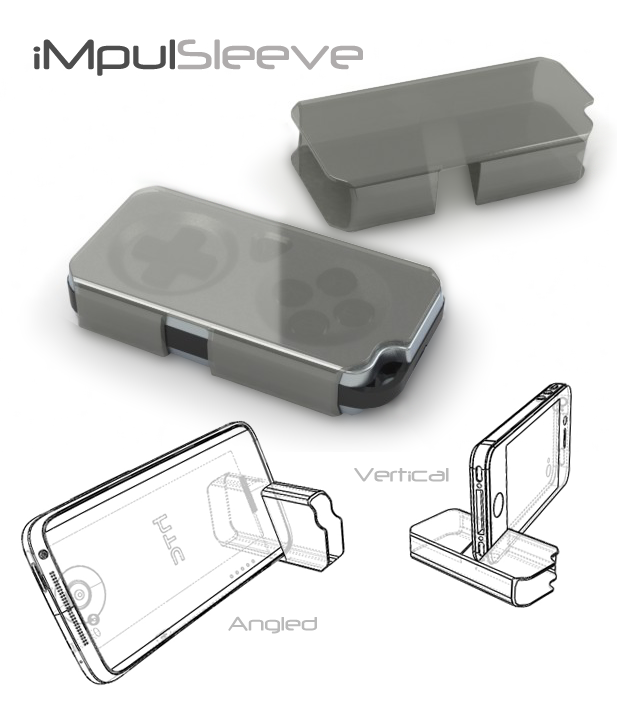

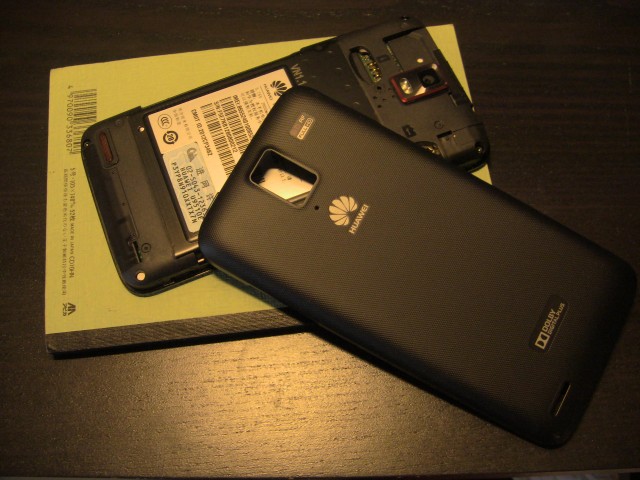
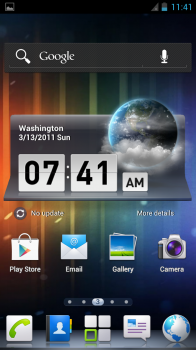
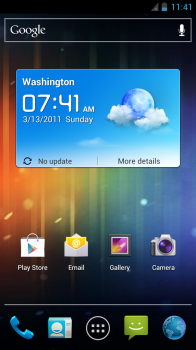
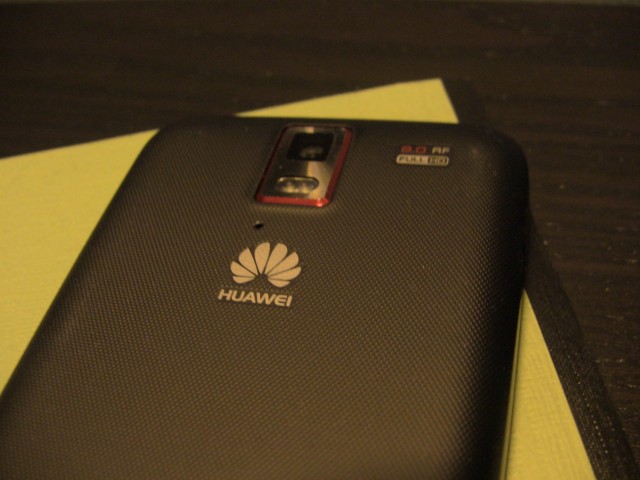
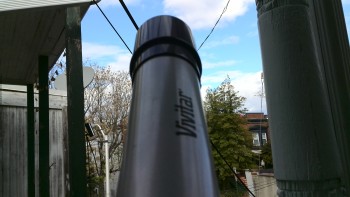


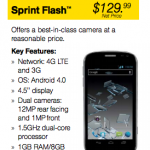


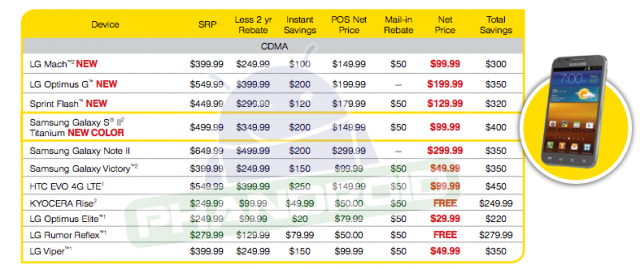


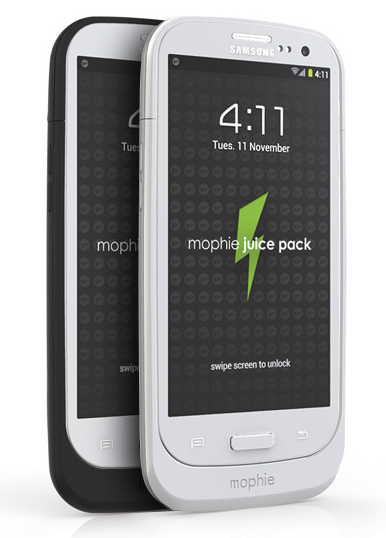
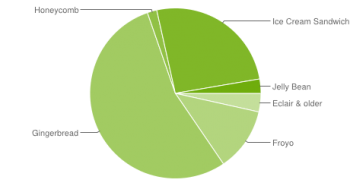
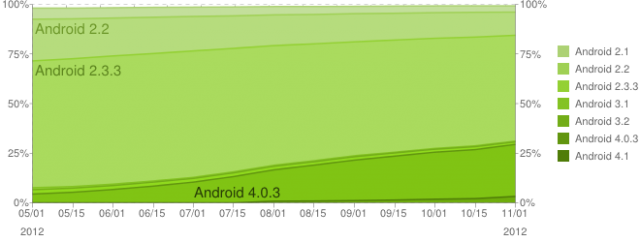


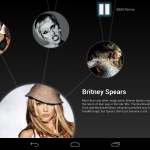

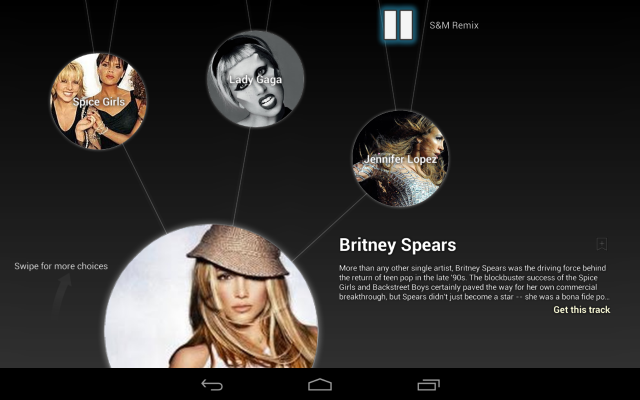
No comments:
Post a Comment